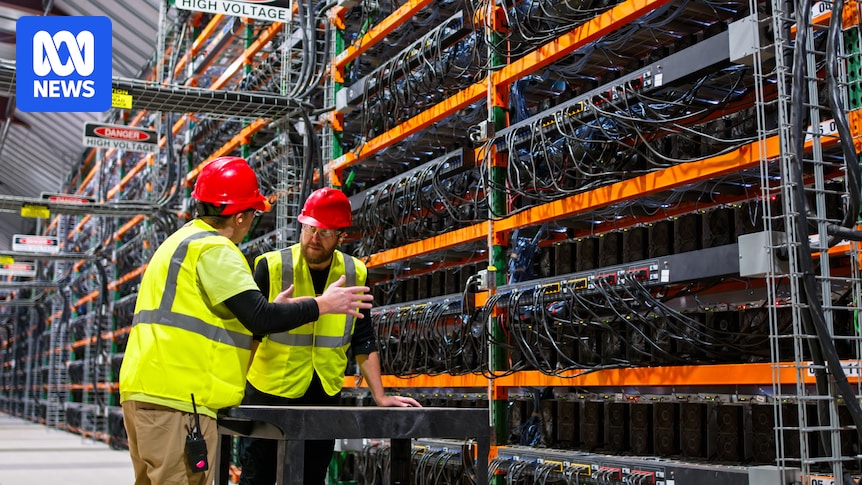
Following recent developments in artificial intelligence, the landscape appears to be a complex interplay between exuberance and skepticism. Reports suggest that the AI investment bubble is deflating, with revenues failing to justify the hefty investments. New AI products, such as GPT-5, have not lived up to expectations. Yet, the narrative of AI as the next industrial revolution persists, with implications for future prosperity and the potential overhaul of copyright laws to facilitate AI model training.
Meanwhile, concerns about job automation, environmental impacts from data centers, and a potential AI crash loom large. Amidst this backdrop, the question arises: should Australia develop its own AI capabilities to compete with global giants like ChatGPT and ensure fair compensation for creative content?
The Diverging Visions of AI’s Future
Understanding the current AI discourse involves recognizing two competing visions of the future. One vision is dominated by major tech companies, primarily in the United States, while the other envisions a more democratized ability to build AI models, with countries like Australia becoming not just consumers but also producers of AI technology.
The Big Tech Vision
Historically, the narrative around AI has been somewhat dystopian, with a few large corporations controlling the technology and its production means. AI would permeate every facet of life, from household appliances to online interactions, but the prohibitive cost of model development would ensure a monopoly for these companies. This would lead to unprecedented profitability and power, potentially culminating in the creation of “super-intelligence.”
OpenAI, known for ChatGPT, and other tech giants continue to chase this vision. Recently, Nvidia committed $US100 billion to OpenAI, aiming to bolster its position as a leader in AI by supplying millions of AI chips for supercomputer development. Similarly, Meta plans to invest heavily in massive data centers in the US.
“AI is advancing at a rate faster than we’ve seen any other technology transition really,” said Anne Hoecker, head of the global technology team at Bain and Company.
According to Bain’s report, the global electricity supply must increase by 20% by 2030 to meet the energy demands of these data centers, with the US alone requiring $US500 billion annually in capital investment.
Slowed Technical Progress and Emerging Opportunities
Despite these investments, technical progress in AI has decelerated. Established large language models (LLMs) are not improving as swiftly as anticipated. For instance, GPT-5, released in 2025, did not significantly outperform its predecessor, GPT-4, despite higher training costs.
An MIT report highlighted that 95% of organizations see no return on their AI investments, and a separate study found that AI can slow down task completion by 20%. This has shifted focus from super-intelligence to practical applications like coding and workflow optimization.
“Everyone is making the assumption the future is larger and more complex models and that’s not necessarily the case,” said Nicholas Davis, co-director of the Human Technology Institute at the University of Technology Sydney.
Open source AI models, which are publicly accessible and often free, are narrowing the gap with proprietary models, offering basic functionalities such as transcription and summarization.
Opportunities for Australian Innovation
The slowdown in AI progress presents opportunities for countries like Australia. Open source LLMs that rival GPT-4’s performance can be fine-tuned with local data, creating models that reflect national values and knowledge.
Sovereign Australia AI, a start-up, plans to develop an LLM with 700 billion to 1 trillion parameters, funded through private capital. Maincode, another Australian company, aims to launch Matilda, a sovereign LLM, with 30 billion parameters, tailored to Australian needs.
“A trillion parameters may be enough for a lot of the AI usages businesses want,” said Simon Kriss, CEO of Sovereign Australia AI.
The Future of AI Investment and Infrastructure
While some speculate about an impending AI bubble burst, data centers continue to expand. Hoecker from Bain and Company likens the situation to the dot-com crash, suggesting a potential “bump in the road” but affirming that data centers will remain essential.
The AI future may involve a mix of large companies developing complex models and smaller entities focusing on customized solutions. Despite economic uncertainties, AI’s integration into everyday tasks necessitates continued infrastructure growth.
As we advance into an AI-driven future, questions arise about its desirability and sustainability. The balance between innovation and ethical considerations will shape the trajectory of AI development and its global impact.







